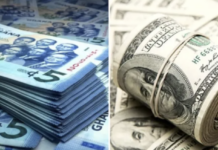
The price of OPEC basket of thirteen crudes stood at $44.18 a barrel on Friday, compared with $44.03 the previous day, according to OPEC Secretariat calculations.
The new OPEC Reference Basket of Crudes (ORB) is made up of the following: Saharan Blend (Algeria), Girassol (Angola), Oriente (Ecuador), Minas (Indonesia), Iran Heavy (Islamic Republic of Iran), Basra Light (Iraq), Kuwait Export (Kuwait), Es Sider (Libya), Bonny Light (Nigeria), Qatar Marine (Qatar), Arab Light (Saudi Arabia), Murban (UAE) and Merey (Venezuela).
Meanwhile, Reuters reports that oil extended gains in Asian trading on Monday as a weaker dollar and easing worries over Britain’s possible exit from the European Union helped support crude prices.
London Brent crude for August delivery was up 48 cents at $49.65 a barrel by 0455 GMT, after settling up $1.98, or 4.2 percent, at $49.17 on Friday.
NYMEX crude for July delivery, which expires on Tuesday, was up 55 cents at $48.53 a barrel, after closing up $1.77, or 3.8 percent, on Friday.
Campaigning for Britain’s vote on EU membership resumed on Sunday after a three-day hiatus prompted by the killing of a pro-EU lawmaker.
Three opinion polls ahead of Thursday’s vote showed the ‘Remain’ camp recovering some momentum, although the overall picture remained one of an evenly split electorate.
“With Brexit dominating the market headlines, it might be moves in the U.S. dollar that drive the oil market at least until we get that out of the way,” said Michael McCarthy, chief market strategist at CMC Markets in Sydney.
“It’s likely to be a nervous and skittish week’s trading.”
The pound climbed 1.6 percent to $1.4589, extending a recovery from last Thursday’s more than two-month trough of $1.4013.
Oil prices continued to recover despite data showing U.S. energy firms adding oil rigs for a third week in a row, suggesting higher production to come.
Oil services firm Baker Hughes reported nine rig additions in the week to June 17.
Aside from Brexit concerns, the market is likely to be caught in a range as any gains would likely be capped by the return of more shale drillers in the United States, McCarthy said.
“Capping market gains at the moment is the potential for those very agile U.S. producers to jump back into production should we see any further substantial rises,” he said.
Source: Reuters


























